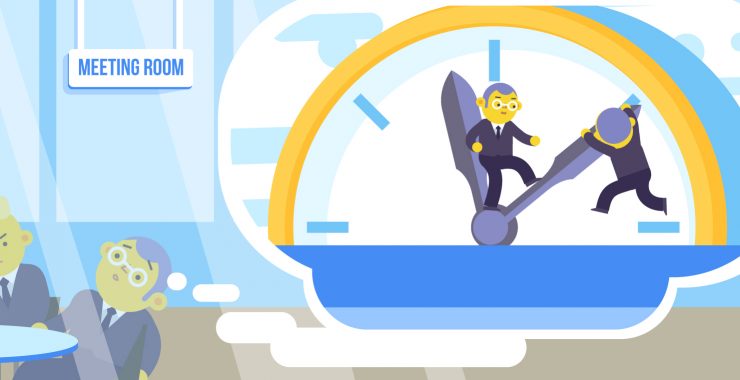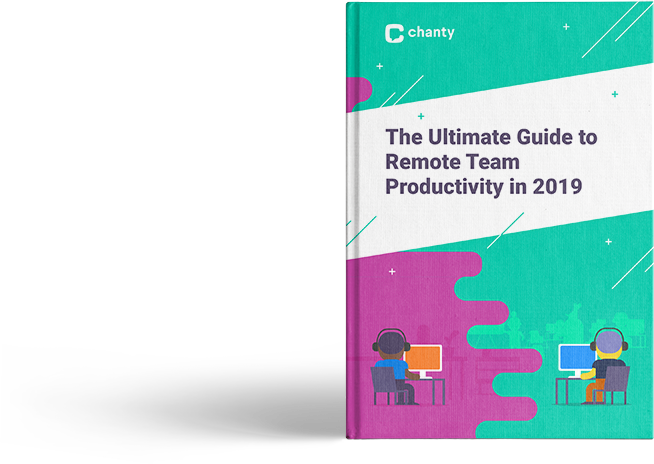The success of a business is not only achieved by long-term goals and plans, but also by ensuring that the day-to-day workflow is efficient and maximizes time. Of course in this day and age, employee satisfaction is integral in every decision making process. After all, has anyone ever complained about a meeting being too short?
According to themuse.com, 37 billion dollars are spent on unproductive meetings per year in the United States alone. A shocking 92 percent of executives confessed to multitasking during meetings. The numbers only increase when employees or meeting participants work remotely, where others can’t monitor their screen during meetings.
More than anything, keeping meetings short has to be part of the company culture. It shows respect for the employees’ time and their schedule. Whether your team members have hours of meetings a day or just a few a week, use these 4 tips to make each of those meetings shorter and more productive:
1. Have an agenda and stick to it
Don’t just have agenda. Have a good quality one with clear objectives. Know what you want to accomplish by the end of the meeting. Consult with any and all other teams/third parties if necessary to set clear and actionable goals. In fact, Forbes recommends spending twice as much time on the agenda as you may feel necessary in order to clarify objectives and really understand the points you’ll cover.
Make your meeting agendas open to the entire staff to contribute to, perhaps in the calendar invite for the meeting. By soliciting input from your attendees, you give them power to define the agenda. That ownership will also help teammates stick to the agenda when you eventually go off topic.
If you find it difficult to simplify a large amount of material, break your meeting up in to multiple sessions. Ask yourself if every meeting member is required for each item on your agenda. Assign time you will be spending on each agenda item, and stick to it strictly. It may feel forced and strict in the beginning, but will come naturally over time.
2. Empower your employees
The most efficient meetings center around making and confirming decisions. If you already have a strong agenda, meeting participants should already know exactly what to expect from the meeting and how to proceed with the next action steps. Not only does this allow for a healthy transparency between you and your employees, but it means that employees can come to the meeting absolutely prepared, saving even more time (or more meetings).
Try taking a page from the Flipped Learning handbook: give attendees access to the meeting notes, agenda, and any documents you’ll look at in the meeting, and ask everyone to come into the meeting with their questions ready. When everyone comes prepared to discuss the items, you spend less time introducing new concepts and more time getting to the real meat of problems.
As further empowerment, allow employees the opportunity to table a topic, especially if it’s clear the discussion will derail the agenda. Employees that have more flexibility feel more ownership over their work and meeting topics, will also take more responsibility outside of meetings. If employees have the ability to set a topic to the side for another time, they will feel empowered.
Sometimes, your employees may not have a lot to say about a given topic or they need to perform a little research before discussing further. Try giving them control and save yourself more time to focus on topics that are more worth your time in the current meeting.
3. Honor everyone’s time
Everyone must be on time, no exceptions. There’s no need to punish late-comers, as accidents happen, but respect the time of those who made it on time by proceeding or rescheduling the meeting.
Verbalize your disappointment when an employee comes to a meeting late. Start meetings on time, regardless of whether or not everyone is present. Tardiness does not have to be a punishable offense, but reinforce good behavior from employees who make it a point to come on time.
The best way to reinforce good behavior is, of course, by rewarding it. This can be done through various forms of praise, acknowledgement, and displays of appreciation, whether done privately or publicly. By repeatedly starting meetings on time, you will gain a reputation for punctuality, and employees will catch on, helping to build a positive meeting culture.
It is also important to end meetings on time. Schedule meetings to last for half the time that you think you’ll need. It will encourage participants to dispose with small talk and tangential conversation.
4. Utilize your tech
Off-topic conversations might start innocently, and most of us are guilty of initiating one every now and then. Try putting your detailed meeting agenda on a timed presentation to move conversation along at speed.
Everyone participating in the meeting should have access to the presentation so that all participants know the pace at which you are moving. Whether it’s on a screen in the meeting room, shared on a Hangout or video conference, or on each attendee’s laptop.
Technology is also helpful, if not integral, when meeting with remote employees. Make remote employees feel welcome by including every individual on the video meeting. Pay special attention to team collaboration tools. Watch for questions–remote employees may be less inclined to break into the conversation because they’re not in the same room.
Share any and all presentation or agenda material with remote attendees beforehand so that they may follow along with you. And make sure you end meetings on time so that remote workers can switch from one meeting to another; this also refers to one-on-one meetings.
Technology also offers the ability for a higher amount of interactivity and engagement from participants. Use your messaging software, your project management software, and any number of free online time tracking apps to build good meeting habits and stay on track during meetings.
Conclusions
Most employees find meetings tedious. Managers complain they are ineffective, and often lead to even more meetings. Cutting down on meeting times, and meetings in general will increase employee satisfaction – not just for your employees and partners, but for you.












Add comment